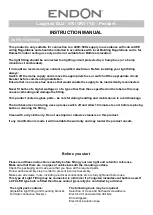
Glossary
Nur für den internen Gebrauch
A31003-S2000-M102-1-76A9, 06/02/2009
X-6
Asterisk - OpenStage Family, Administration Manual
bkglos.fm
SIP
S
ession
I
nitiation
P
rotocol. Signaling protocol for initialising and controlling sessions, used
e. g. for ->VoIP calls.
SNMP
S
imple
N
etwork
M
anagement
P
rotocol. Used for monitoring, controlling, and administra-
tion of network and network devices.
SNTP
S
imple
N
etwork
T
ime
P
rotocol. Used to synchronize the time of a terminal device with a
timeserver.
Subnet Mask
To discern the network part from the host part of an ->IP address, a device performs an
AND operation on the IP address and the network mask. The network classes A, B, and C
each have a subnet mask that demasks the relevant bits: 255.0.0.0 for Class A,
255.255.0.0 for Class B and 255.255.255.0 for Class C. In a Class C network, for instance,
254 IP addresses are available.
Switch
Network device that connects multiple network segments and terminal devices. The for-
warding of data packets is based on ->MAC Addresses: data targeted to a specific device
is directed to the switch port that device is attached to.
T
TCP
T
ransfer
C
ontrol
P
rotocol. The protocol belongs to the transport layer and establishes a
connection between two entities on the application layer. It guarantees reliable and in-order
delivery of data from sender to receiver, as opposed to ->UDP.
TLS
T
ransport
L
ayer
S
ecurity. Ensures privacy between communicating applications. Typically,
the server is authenticated, but mutual authentication is also possible.
U
UDP
U
ser
D
atagram
P
rotocol. A minimal message-oriented transport layer protocol used espe-
cially in streaming media applications such as ->VoIP. Reliability and order of packet deliv-
ery are not guaranteed, as opposed to ->TCP, but ->UDP is faster and more efficient.
URI
U
niform
R
esource
I
dentifier. A compact string of characters used to identify or name a re-
source.







































